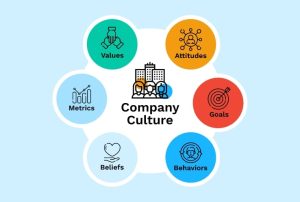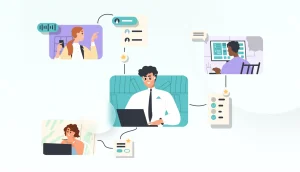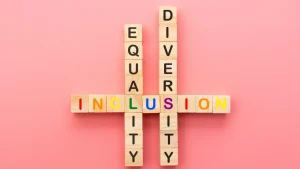Augmented Teams Cultural Integration: Key Considerations
Introduction In today’s globalised business environment, companies are increasingly turning to augmented teams to supplement their internal teams. However, when adding externa...

Introduction
In today’s globalised business environment, companies are increasingly turning to augmented teams to supplement their internal teams. However, when adding external talent to teams, cultural fit is critical to ensuring success.
Cultural fit is often overlooked in the rush to scale or meet project deadlines, but its importance cannot be overstated. Poor cultural fit can lead to miscommunication, low morale, and a lack of cohesion, all of which negatively impact project productivity and outcomes. In this article, we’ll cover key considerations for integrating augmented teams into your company to create a harmonious, productive work environment.
Understand Your Company’s Culture
Before you can successfully integrate augmented team members, it’s critical to have a clear understanding of your company’s culture. Culture encompasses the shared values, beliefs, behaviours, and practices that shape how people in your organisation work and interact. Some companies thrive on open communication, collaboration, and flat hierarchies, while others may be more structured, formal, or focused on individual contributions.
Start by identifying the core elements of your culture:
- Communication style: Is communication more direct or nuanced? Are decisions made through collaborative discussion or top-down directives?
- Work-life balance: What are the expectations around work hours, remote work, and weekends?
- Team collaboration: Do teams typically work closely together, or are individuals more focused on independent tasks?
- Feedback and recognition: How does your company approach feedback and how are accomplishments recognised?
Understanding these aspects of your own culture can help you better communicate expectations to augmented teams and assess how well they will fit in.

Screen for Cultural Fit During Recruitment
Hiring for cultural fit doesn’t mean finding someone who is an exact mirror of your internal team. Rather, it means finding external candidates who align with your company’s values and can easily adapt to its work environment. During interviews, we may ask questions that provide insight into how the candidate handles teamwork, communication, and conflict.
Questions such as:
- How do you handle communication challenges in a diverse team?
- Can you give an example of how you adapted to a new work environment?
- How do you balance individual tasks with teamwork?
In addition to skills and qualifications, these questions provide insight into how well augmented teams can integrate into your existing team dynamics.
Promote Open Communication
Effective communication is the cornerstone of successful team integration. When adding external talent to a team, it’s important to establish open lines of communication from the start. This ensures that both internal and augmented team members are clear on goals, expectations, and responsibilities.
Here are some steps to ensure clear communication:
- Use a common communications platform: Make sure everyone is using the same tools for messaging, video calls, and project tracking to avoid information silos.
- Have regular check-ins: Schedule frequent touchpoints, especially early on, to ensure external talent is aligned with project goals and company culture.
- Clarify roles and responsibilities: Make sure each team member, internal or external, understands their role in the project and how their work fits into the bigger picture.
Encouraging feedback loops is also important. Whether through formal surveys or informal conversations, solicit input from both internal and external team members to identify areas where communication can be improved.

Invest in Team Bonding
Augmented teams, especially those working remotely or on a contract basis, can sometimes feel isolated from the rest of the team. Investing in team-building activities can help bridge the gap and create a sense of belonging for everyone involved.
Consider organising:
- Virtual or in-person team-building events: These can range from informal social events like virtual happy hours to more structured activities like problem-solving games.
- Project-based collaboration: Encourage collaboration by pairing internal and external team members on projects that require close coordination. This can foster mutual trust and respect.
- Onboarding and mentoring: Develop an onboarding process that includes mentoring from internal team members, helping external talent navigate your company culture and build relationships.
Foster Inclusivity
Inclusion goes beyond simply welcoming new team members – it involves making them feel valued and part of the core team. When augmented teams feel like a temporary or secondary addition, it can lead to alienation or a lack of commitment to the success of the project.
Here are some ways to promote inclusion:
- Invite external team members to company-wide meetings and events: Even if they are not permanent employees, including them in company-wide communications and events can help foster a sense of belonging.
- Recognise contributions: Publicly recognise the achievements of external team members in the same way you would those of internal employees.
- Create a culture of respect and equality: Ensure that external talent is treated with the same respect and given the same opportunities to contribute as internal team members.

Balance Cultural Differences
When you add external talent to your team, especially from different regions or countries, cultural differences can arise. These differences can manifest in communication styles, approaches to work, or even perceptions of hierarchy and authority. While these differences can sometimes create problems, they can also enrich the team with new perspectives and ideas.
To balance cultural differences:
- Provide cultural training for both internal and augmented teams: Educating team members about different cultural norms can reduce misunderstandings and improve collaboration.
- Encourage cross-cultural dialogue: Create opportunities for team members to share their cultural experiences, promoting mutual respect and understanding.
- Be flexible and adaptive: Encourage a culture of flexibility where different approaches are valued and team members are open to learning from each other.
Set Clear Expectations
It’s important to set clear expectations around performance, deadlines, and deliverables from the outset. Uncertainty can lead to frustration and alienation, so make sure augmented teams are clear about what’s expected of them, both in terms of the work itself and how they’ll behave within the team.
Some key areas to clarify include:
- Performance standards: Make sure external team members know how their performance will be assessed and what metrics will be used.
- Deadlines and accountability: Clearly communicate project deadlines and who’s responsible for what.
- Feedback processes: Establish a process for giving and receiving feedback so external talent can continually improve and adapt.
Plan for Long-Term Success
If you are using augmented teams on a long-term or ongoing basis, it is important to plan for sustainable integration. This means thinking beyond the initial onboarding phase and considering how external team members will continue to contribute effectively over time.
To plan for long-term success:
- Create career development opportunities: Even if external talent is not a full-time employee, providing growth opportunities such as skill development or leadership roles can encourage greater engagement.
- Maintain ongoing communication: Don’t let external talent fall by the wayside after the initial onboarding phase. Keep communication channels open and ensure they continue to feel like a valued part of the team.
- Monitor and adapt: Regularly assess the cultural integration of your external team members and make adjustments as needed to ensure everyone remains aligned and motivated.

Conclusion
Cultural integration is a key factor in the success of team augmentation. While augmented teams can bring tremendous value in terms of skills and experience, their success within your organisation depends largely on how well they integrate with your existing team and culture. By focusing on communication, inclusivity, and mutual respect, companies can create a harmonious work environment that leverages the strengths of both internal and external talent.
Whether you’re expanding teams with local freelancers, offshore developers, or highly specialised consultants, taking the time to plan for cultural integration will lead to better project outcomes, higher morale, and a more cohesive, productive team.
If you have any questions or an idea for a project, contact us via sales@instandart.com or fill out the form on the main page of the site to discuss. We are always ready to help!